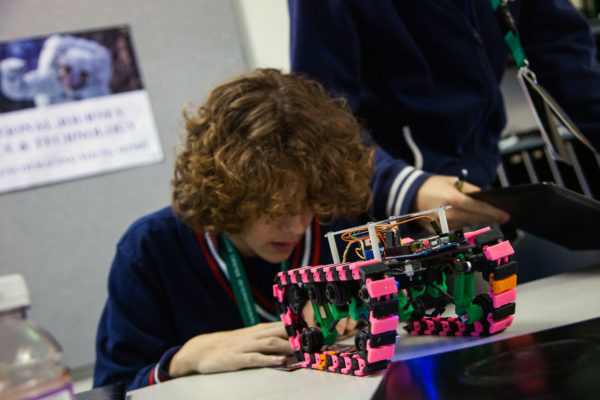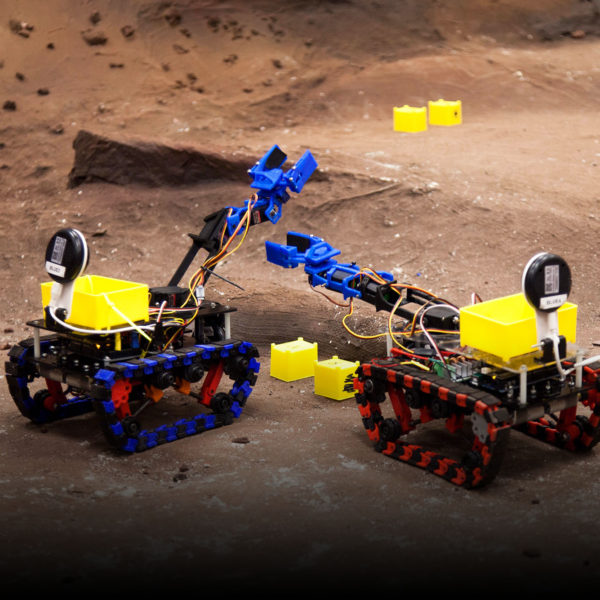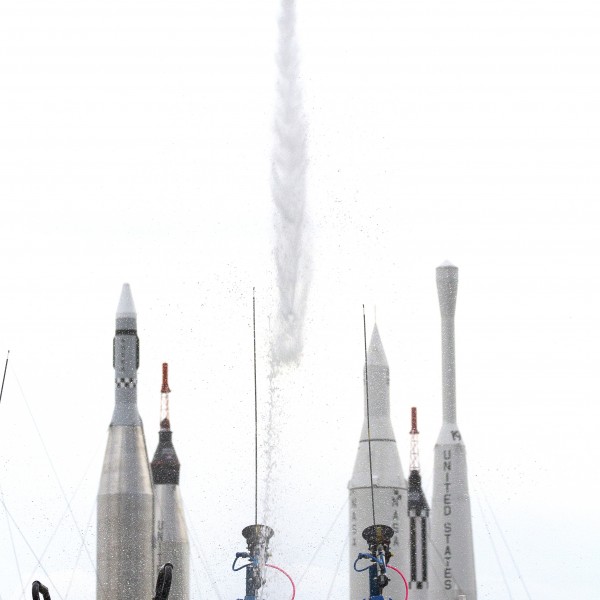SpaceTrek @ Kennedy Space Center
SpaceTrek is an advanced STEM program at NASA’s Kennedy Space Center. The program excels at introducing innovative technologies and content for teaching science, mathematics, engineering and technology with a space exploration background.
SpaceTrek currently offers the following programs:



Customize & Design AMAZING Trips
All programs at the Kennedy Space Center Visitor Complex include:
Lunch with an Astronaut

An impressive roster of astronauts appear, including Al Worden, Bob Springer, Bruce Melnick, Charlie Walker, Jon McBride, Wendy Lawrence and Winston Scott.
Space Shuttle Atlantis Exhibit
Space Shuttle Atlantis showcases the priceless, historic spacecraft that tells the incredible story of NASA’s 30-year Space Shuttle Program. Space Shuttle Atlantis is displayed as only spacewalking astronauts have seen her before — rotated 43.21 degrees with payload doors open and its Canadarm (robotic arm) extended, as it has just undocked from the International Space Station.
Space Shuttle Atlantis features state-of-the-art multimedia presentations and more than 60 interactive exhibits and high-tech simulators that bring to life the complex systems and components behind this incredible feat of engineering. One of the most complicated and sophisticated pieces of equipment ever built, the shuttle is a vehicle that launched like a rocket, flew in orbit like a spacecraft and landed on a runway like a glider.
The immersive experience also shines a spotlight on the astounding achievements made over the course of the 30-year Space Shuttle Program, most notably, the building of the International Space Station and the launch and maintenance of the Hubble Space Telescope.
Also celebrated are the thousands of people who took part in creating and maintaining NASA’s five space-flown shuttles – Columbia, Challenger, Discovery, Atlantis and Endeavour – and how the shuttle program has paved the way for NASA’s next generation of manned spaceflight programs.
Shuttle Launch Experience
Your journey begins as you walk up the gantry, hearing from experienced NASA astronauts as they share their personal recollections of their own missions into space.
Next, enter the heart of space shuttle operations for your prelaunch briefing, given by veteran Space Shuttle Commander and NASA Administrator, Charlie Bolden. Getting nervous yet? Don’t worry. Commander Bolden takes you step by step through the launch sequence, beginning four hours before launch and fast forwarding to the final seconds on the countdown clock. He even tells you what to do if you receive the dreaded 402 alarm… But there’s no time to worry about that – it’s time to enter the crew cabin and strap in. You’re about to “get vertical” in an all-too-real simulation of the space shuttle’s eight-and-a-half-minute ascent into orbit.
Sure enough, just as Commander Bolden described, you’ll feel the g-forces pushing you back into your seat as you hurtle toward the heavens at simulated speeds up to 17,500 miles per hour. Then as you begin to wonder if you’re really cut out for space flight, you suddenly reach orbit and the sensation of weightlessness takes over. For a brief moment, you feel as light as a feather, as if you’re floating in your seat. That’s just one of the incredible moments that astronauts live for –you’ll experience another as the shuttle’s payload bay doors open and you get a breathtaking view of Earth through an astronaut’s eyes – as a serene, cloud-covered blue marble set against a black, starlit sky.
KSC Up-Close Explore Tour (Optional)
- From your tour bus, see many of KSC’s most historically significant buildings, including NASA’s KSC Headquarters; the new headquarters building now under construction; the newly renamed Neil Armstrong Operations & Checkout Building where astronaut crews spent the final days before their flights; and the International Space Station Processing Facility, where components of the ISS were built before being ferried into space.
- Disembark on the NASA Causeway alongside the scenic Banana River, where you can get a panoramic view of KSC as well as Cape Canaveral Air Force Station.
- Stop for photos outside the 525-foot-tall Vehicle Assembly Building (VAB). Inside these high-bay doors, the Saturn V moon rockets and space shuttles were stacked and prepared for launch, as will be the next crewed space program, the Orion capsule aboard the Space Launch System (SLS).
- Drive around Launch Pad 39B, one of two pads used for every space shuttle launch from 1981 to 2011 and now modernized for its new job of launching the SLS. You’ll see the pad up close then disembark at a scenic location nearby, flanked by the Atlantic Ocean on one side and pads 39 A and B on the other side.
Along the way, your tour guide will share historical facts about the sights you’re seeing – vehicles, buildings and structures crucial to current and past operations. Your space expert also will give you real time updates on what’s happening at Kennedy Space Center and answer questions about the space program. Throughout your tour, you are surrounded by the natural beauty of the Merritt Island National Wildlife Refuge.
As NASA grows closer to once again launching crewed vehicles into space, many of the areas on the Up-Close Explore Tour will become off limits. Don’t miss your chance to explore where America’s space program began and discover for yourself where it leads next.




